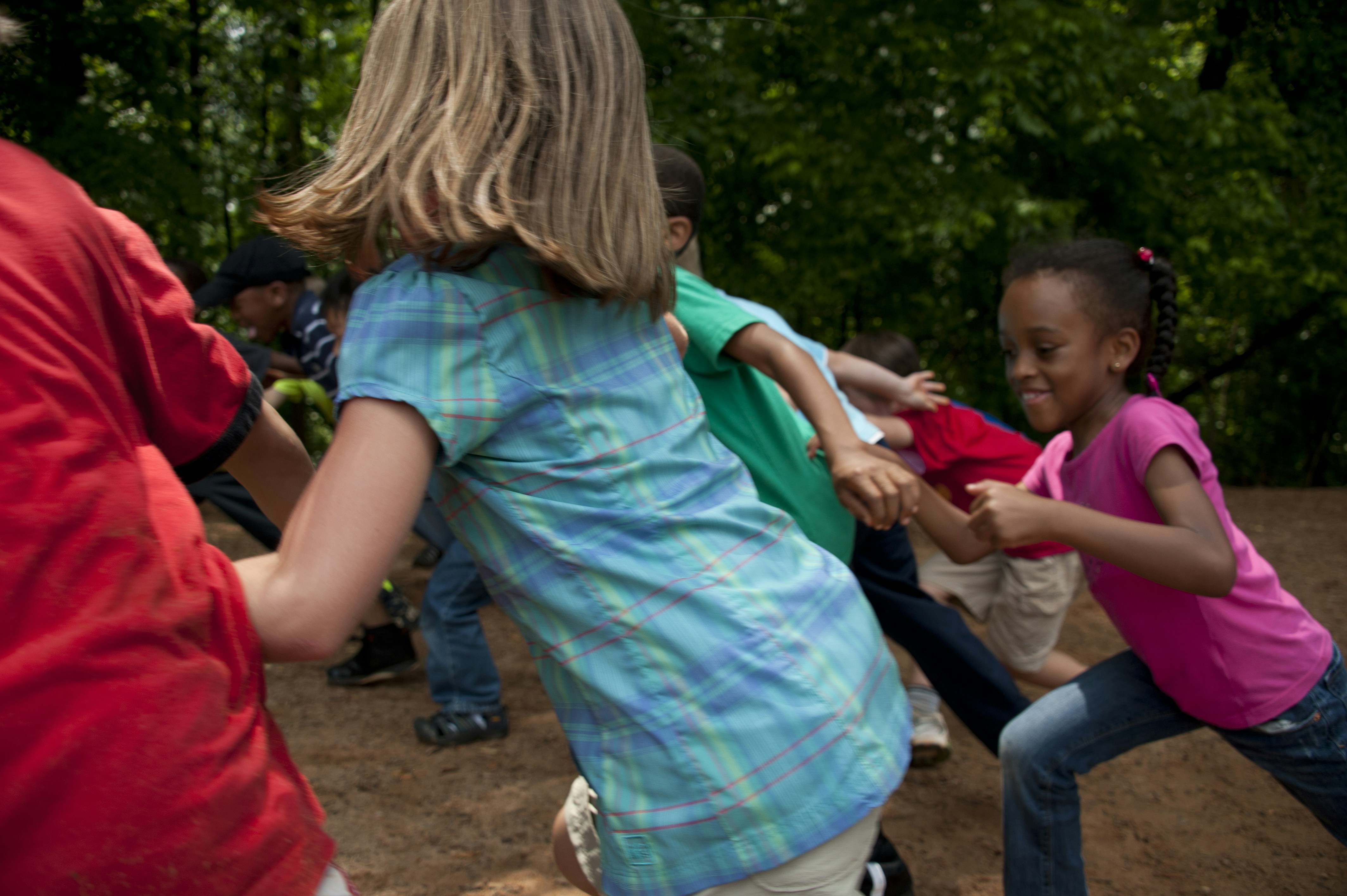

Ever find yourself trying to reason with your child mid-meltdown, saying "Use your words" only to watch their distress escalate? When emotions run high, the body often holds the key long before words catch up. When your child is emotionally flooded, their brain literally can't access language centers—but movement can change brain chemistry and nervous system states almost immediately.
Download the One-Pager
When "Use Your Words" Just Doesn't Work
Ever find yourself trying to reason with your child in the middle of a meltdown, saying things like "Use your words" or "Let's talk about what's bothering you"—only to watch their distress escalate even more? You're definitely not alone, and you're absolutely not doing anything wrong.
Here's what's actually happening: when your child is emotionally flooded, their brain literally can't access the language and reasoning centers you're trying to reach. It's not that they're being defiant or choosing not to cooperate—their nervous system is in survival mode, and talking simply isn't an option right then.
When emotions run high, the body often holds the key long before the words catch up. The fastest, most effective path to emotional regulation often isn't through words at all. It's through the body. And there's fascinating brain science that explains exactly why this works so well.
Your child's nervous system processes information in a very specific order. Understanding this sequence changes everything about how we support emotional regulation:
Level 1: Sensory/Physical (Brainstem)
Breathing, heart rate, muscle tension, temperature
Level 2: Emotional (Limbic System)
Feelings, reactions, fight–flight–freeze responses
Level 3: Cognitive (Prefrontal Cortex)
Thinking, reasoning, problem-solving, language
Here's the crucial part: You can't access the higher levels until the lower ones feel safe and stable.
This isn't willful defiance. This is neuroscience.
Movement isn't just about “burning off energy”—it actively shifts what's happening in your child's brain and body. Different types of movement activate specific calming pathways:
(swinging, rocking, bouncing)
(pushing, pulling, carrying)
(crawling, marching, opposite arm/leg)
(squeezes, weighted items, compression)
| Age Range | What's Developing | What You Might Notice | Body-Based Strategies That Help |
|---|---|---|---|
| Ages 2–4 Co-regulation through presence |
• Language centers emerging • Regulation still external • Sensory systems in development |
• Meltdowns that resist reasoning • Need for containment • Full-body emotional expression |
• Rocking, swinging, or bouncing • Containment hugs (when welcomed) • Repetitive movement songs • Animal walks or tactile play |
| Ages 5–8 Learning self-regulation with support |
• Increased interoceptive awareness • More prefrontal access • Beginning to recall and reuse strategies |
• Recognizing rising emotion • Verbal expression with physical signs • Trial-and-error use of tools |
• Wall pushes or resistance bands • Reset routines: breath + movement • Yoga flows, jumping jacks • Compression wear or weighted tools |
Deep pressure is one of the most effective strategies for emotional regulation because it works directly on the nervous system:
Always ask permission and respect your child's response.
Breath connects automatic and voluntary systems, making it a powerful regulation tool.
The goal isn't to suppress emotions—it's to support the body in feeling safe enough to process them.
Try: “I can see your body is having big feelings. Let's do some wall pushes together, then talk.”
Try: “Your body looks activated. Want a tight squeeze or some space to move?”
Try: “I'll sit here while your body settles. We can talk when you're ready.”
10 wall pushes → 5 breaths (in 4, out 6) → repeat once
Bear walk to door → crab walk back → 60 seconds rocking on back
Pillow squeeze → roll therapy ball along back → “burrito” wrap in blanket (with consent)
March in place, touch opposite knee to elbow for 30 counts while naming colors
Occupational therapists specializing in sensory and emotional regulation can provide individualized strategies.
This week, try offering body-based strategies before verbal ones:
You're not trying to eliminate emotions. You're helping your child's body feel safe enough to move through them.
Proprioception and safety. Signals from muscles/tendons (Golgi tendon organs, muscle spindles) give the brain a clear map of body position. Strong, organized input from these systems can reduce the brain's need to stay on high alert.
Breath as a bridge. Slow exhalations increase vagal influence on the heart–lungs network, which can cue the brain that the body is safe enough to downshift.
Developmental Lens:
References:
Educational Content Only
This resource presents neuroscience-based frameworks as one helpful way to understand your child's experiences. It's designed to complement—never replace—professional clinical services, medical advice, or therapeutic interventions.
Trust Your Instincts
Every child's brain works differently. You know your child best, and what resonates for one family may not apply to another.
This content is developed with care, backed by research, and offered with respect for your family's unique journey.